Media | Articles
The essential Mag Wheel field guide
You can’t have the perfect look with a 1960s performance car without mag wheels. Sure, when it comes to factory offerings, some folks have an affinity for poverty caps, and you may find a nonconformist who will go with full wheel covers, but factory mags will always reign supreme.
It seems most manufacturers truly began to offer their own mag wheels after noting the popularity of aftermarket wheels. Logically, manufacturers felt it was wiser to keep their customers’ money through the whole transaction, so they developed their own racy rims to mimic what they saw on the street.
While the term “mag wheels” comes from early designs made from magnesium, it’s now a catch-all for any classic, performance-look cast wheel. Here’s a rundown of what each manufacturer produced:
AMC
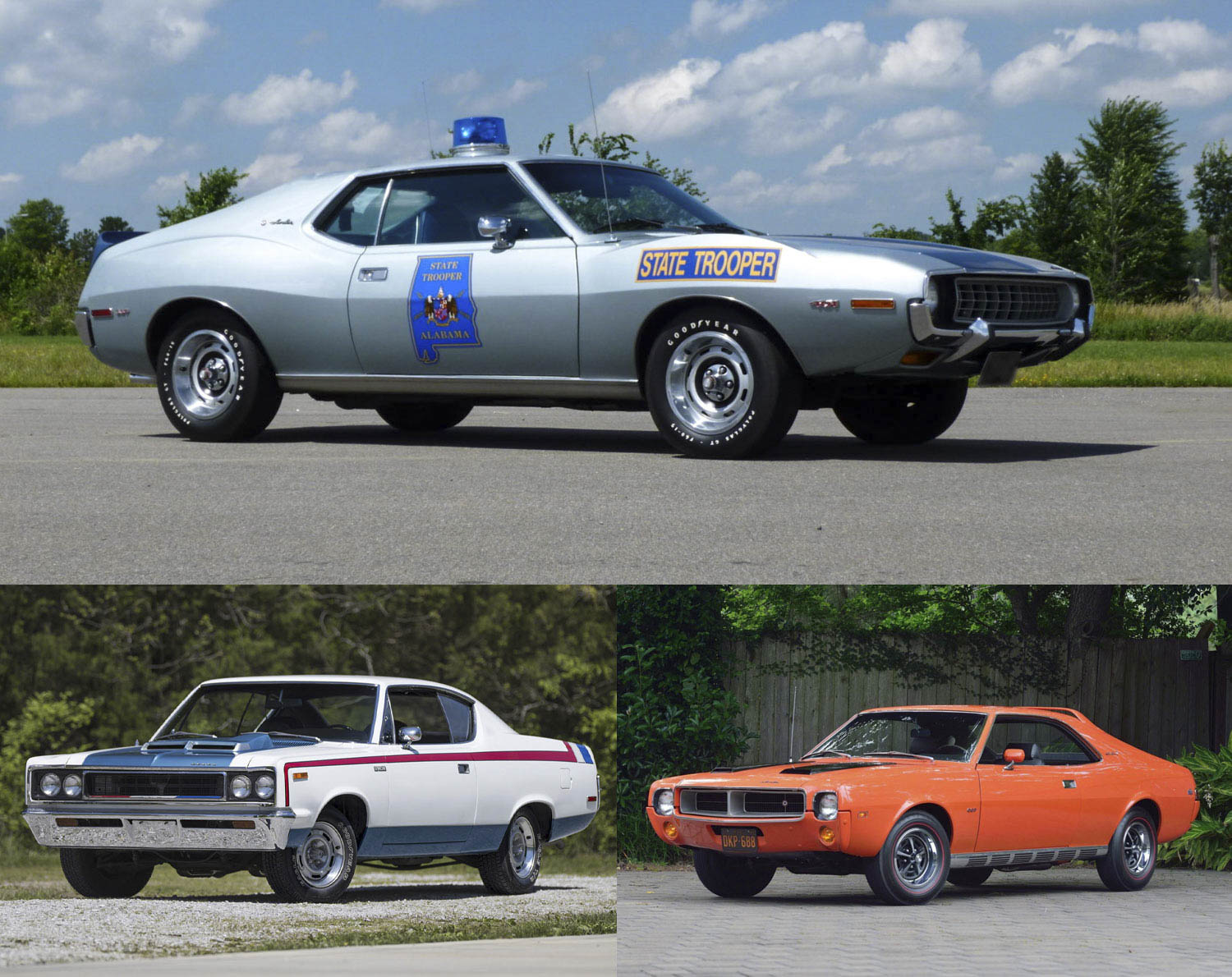
American Motors’ true performance calling arrived in 1967 in the form of the 343 four-speed Rambler American, but it was not available with factory mags. With the advent of the 1968 Javelin and AMX, a “mag-style” wheel similar to the iconic Magnum 500 became available as an option (bottom right). These continued to be available on the Javelin through 1974 as well as the 1969 SC/Rambler.
Marketplace
Buy and sell classics with confidence
A five-slot design appeared on the 1970 Rebel Machine (bottom left), which also was available for the 1971 “Matador Machine” and appeared mid-year for the Javelin and AMX through 1971, according to AMC experts John Becker and Ian Webb.
A similar, eight-slot design, sans trim ring, debuted as standard equipment for the 1971 Hornet SC/360 and later became standard (with trim ring) for the 1972 Javelin AMX and optional for the Javelin ( top). This design continued through 1974 on the Javelin and AMX.
Buick
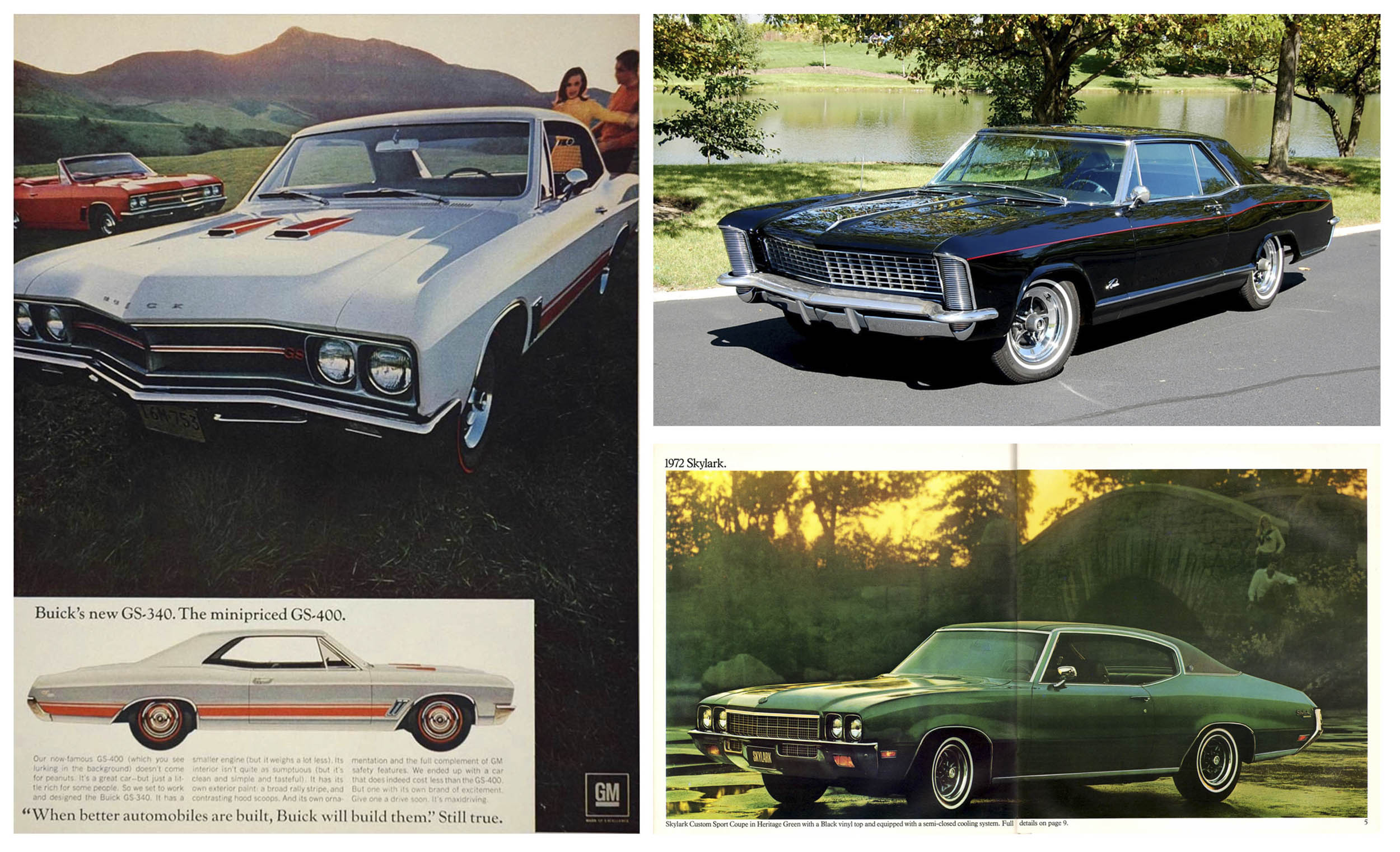
Buick began offering its classy five-spoke Chrome Plated Wheel (code V2) in 1964 for the full-size Wildcat and personal-luxury Riviera. For 1965, it was an option for the all-new Gran Sport package for the Skylark, although the mags were sometimes referred to as Formula V. With variations, this wheel (above, top right) was offered into the 1980s.
In 1967, a red slotted Rallye wheel was paired to the red-striped GS 340 (above, left), but for 1968 a similar wheel (painted body color except black for light-colored cars) became available for other A-body Buicks as code V6. Interestingly, these were the same units as Chevrolet’s Rally Wheel but with a Buick center cap. The wheel was discontinued for 1969.
The Super Sport wheel (code V7) was made standard in 1969, for the GS California and optional for other GS and Special/Skylark models. According to Buick expert Duane Heckman, it used the same stamping as the Chrome Plated Wheel but was painted and came with a trim ring. The Super Sport wheel returned for 1971–72 but was redesigned and now sourced through Kelsey Hayes. (above, bottom right.)
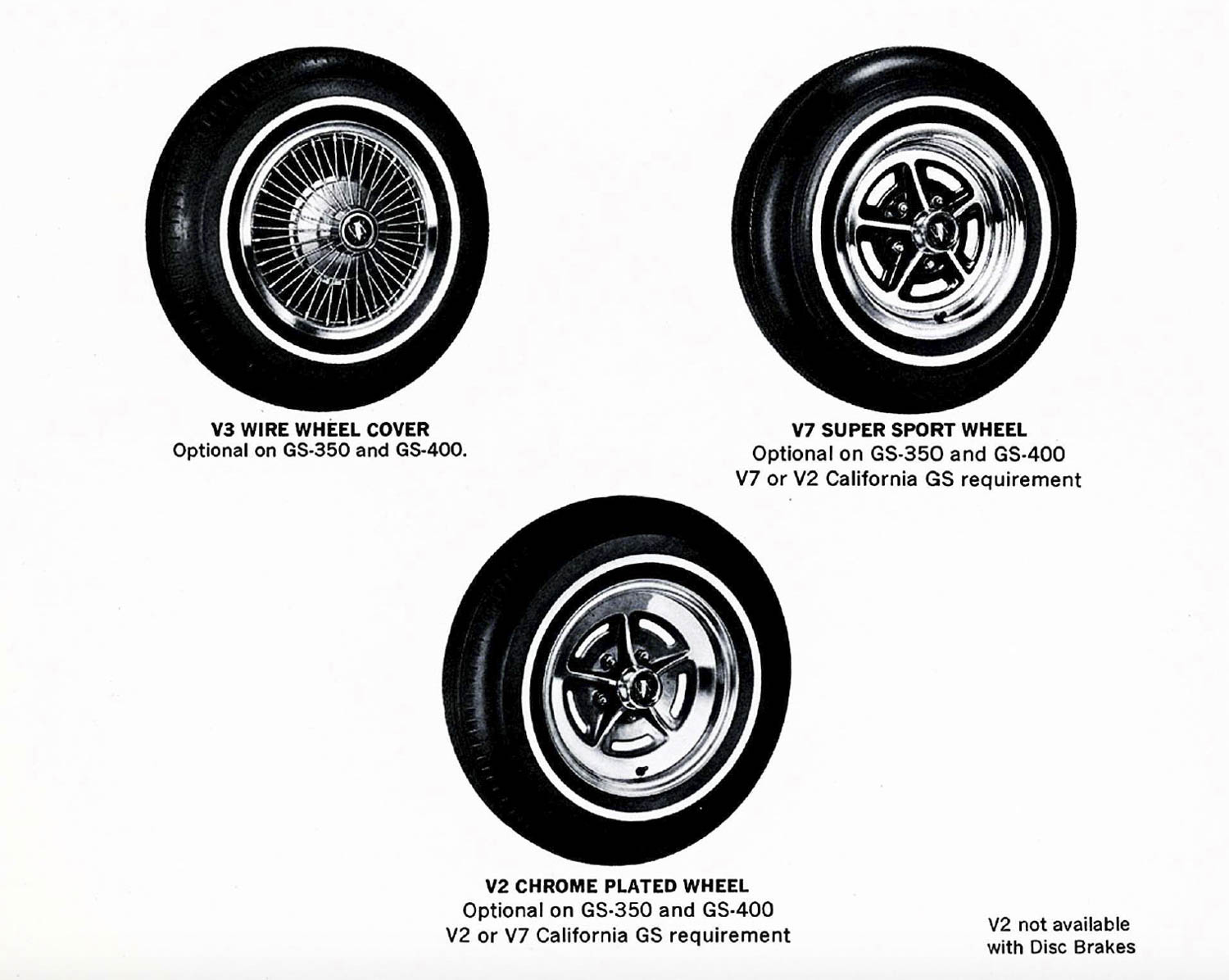
Chevrolet
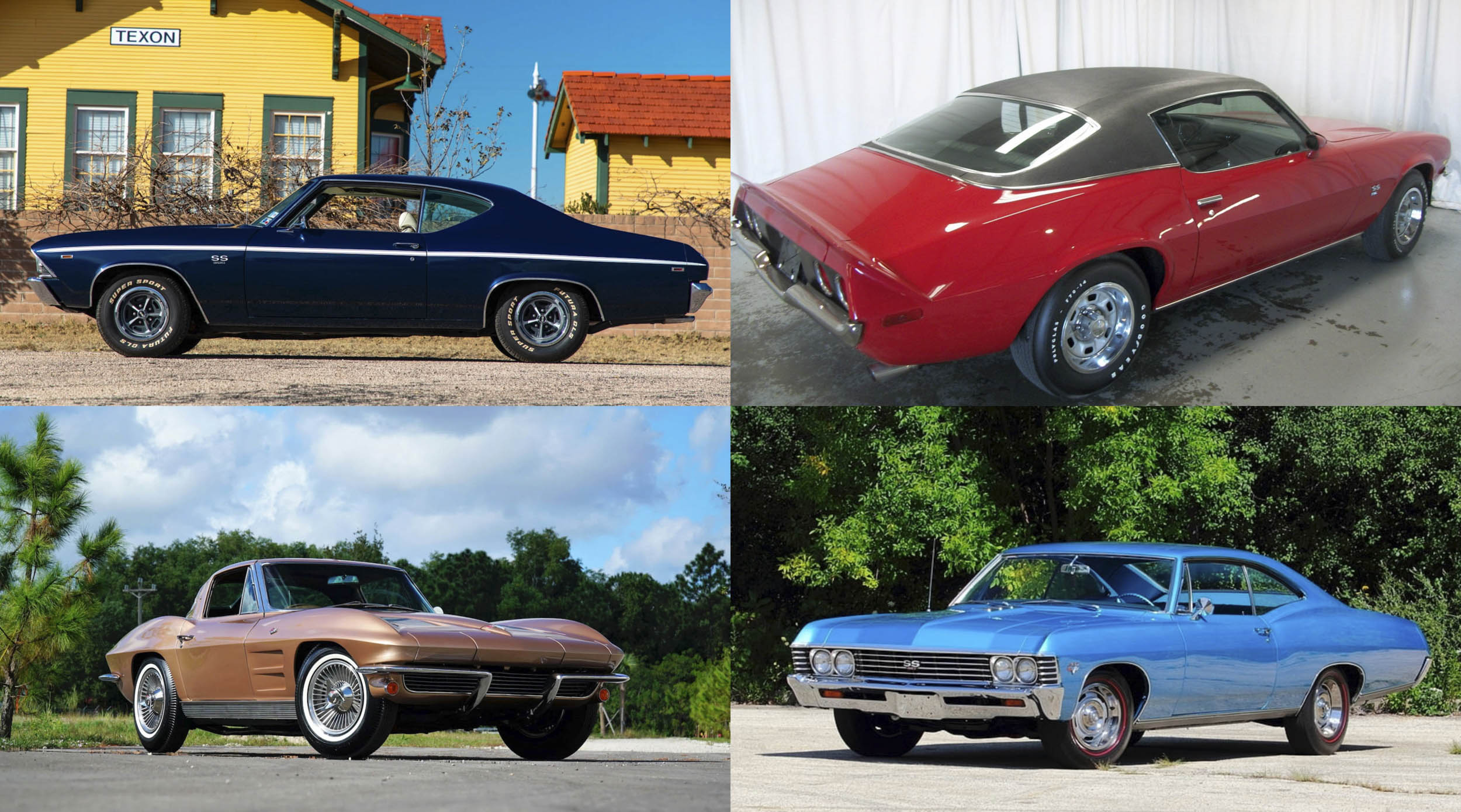
The Corvette was the recipient of Chevrolet’s first mag wheels, an optional aluminum wheel with knock-off hubs starting in 1963 (bottom left). The knock-offs were deleted in 1967, the wheel’s final year.
The slotted Rally Wheel debuted in 1967 and was standard through the end of the muscle car era (bottom right). It also was the first mag wheel available for Chevrolet passenger cars. It featured a shallow center cap in ’67.
The Magnum 500-like Super Sport Wheels were introduced in 1969 (top left). They became standard on the 1970 Chevelle SS series, which was unusual in a time when most muscle cars featured poverty caps, or hub accents on steel wheels, as standard equipment.
That same year, with the mid-year introduction of the redesigned Camaro, a new “sport wheel” was introduced for the Camaro Z/28. There also was another new wheel, confusingly named the Rally Wheel (top right), but different than the evergreen Rally Wheel that was already in use across the Chevy lineup. Both the Sport Wheel and Rally Wheel became available on other models starting in 1971.
Ford

The famous Styled Steel Wheel first appeared in 1965 on Mustangs (above), followed by the upsized 1966 Fairlane.
In 1968, both the Mustang and Fairlane featured a new, round-slotted Styled Steel Wheel (below, top right) that was carried over into 1969. However, for 1970, the Styled Steel Wheel was redesigned once again (below, bottom right), now with oval slots like those available for the Cyclone.
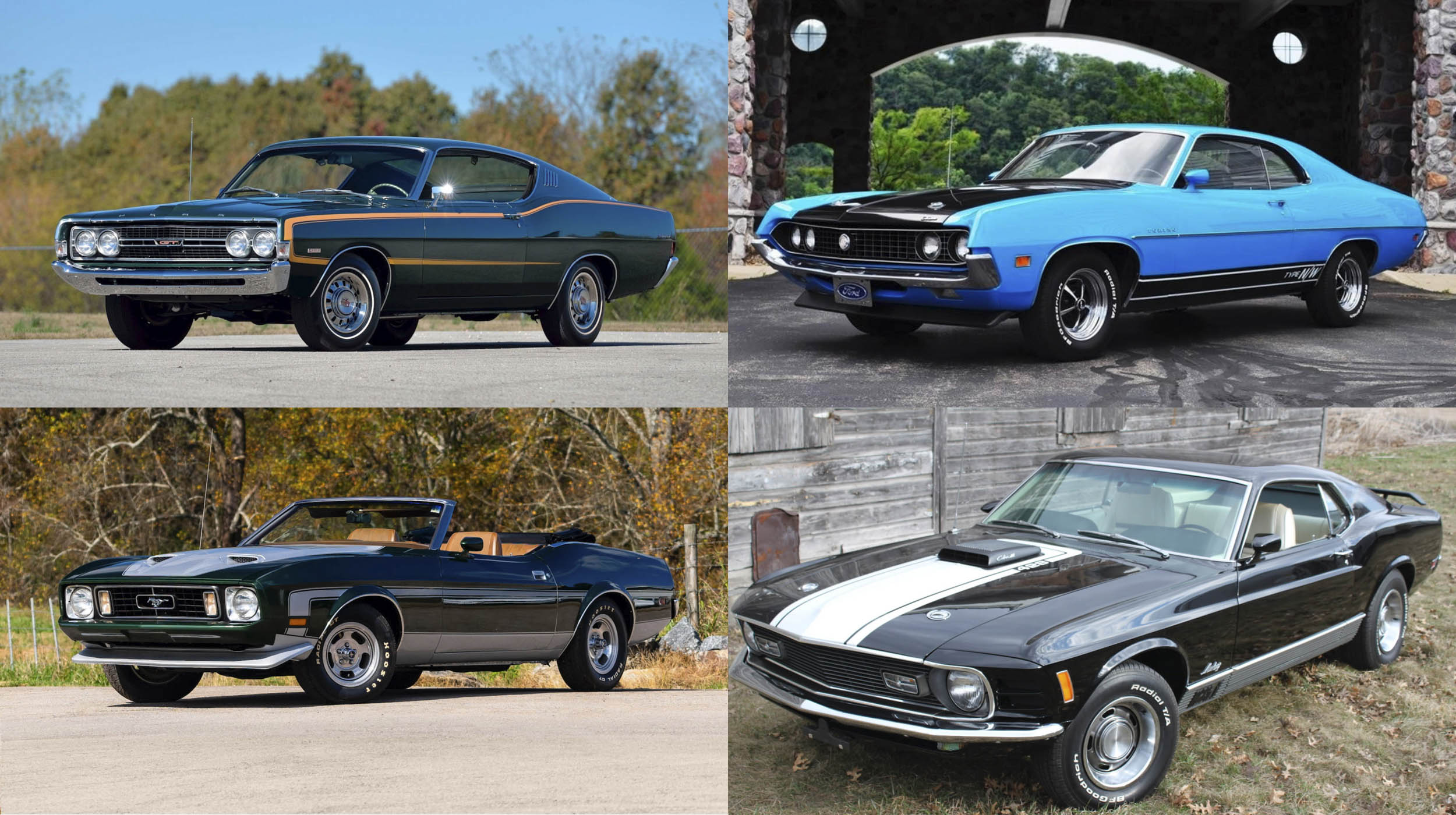
Magnum 500s became available for the 1969 Boss 302 and 429. The following year they became available for all Mustang models and the redesigned 1970 Fairlane/Torino series (above, top right). The Magnum 500 lasted through 1972 for the Mustang, when it was replaced by a forged aluminum wheel (above, bottom left), while Magnums continued into 1973 for the Torino.
Mercury

Although Mercury was a kissing cousin to Ford, the two didn’t often share wheel designs. The Styled Steel Wheel was introduced mid-year 1966 for the Cyclone GT Pace Car (top left). It continued to be available in 1967 and, with slight changes, in 1969. It also graced the Cougar from 1967–70.
For the 1968 Cyclone and other mid-size models, the Styled Steel Wheel (bottom right) was now a 12-slot mag—some came with “Mercury Man” center caps. A similar wheel was available in 1969 for the mid-year Cyclone Spoiler and Cougar Eliminator.
Like the Ford Fairlane/Torino, five-slot mags were introduced for 1970–71 Cyclones, also named—surprise!—Styled Steel Wheels (top right). The Cougar adopted this design for 1971–73.
Big Mercurys had a mag wheel option, the “styled aluminum wheel” that came standard for the ’69 Marauder X-100 (bottom left) and optional for the ’70 version and all other 1969–70 full-size Mercurys.
Mopar

Unlike Ford and Mercury, Plymouth and Dodge were more in sync when it came to available wheels. For 1967, the two introduced the “chrome custom road wheel,” which was a Magnum 500 in all but name (top left). Offered for the all-new GTX and various models over the years, this five-spoke mag lasted through 1974.
In 1969, Chrysler introduced the “cast aluminum road wheel,” (top right) otherwise known as the “recall wheel” because it was pulled from production very early in the model year due to loosening lug nuts. It was available for all classes of Plymouth and Dodge automobiles.
In 1970, the ever-popular, slotted Rallye road wheel (bottom left) debuted for A-body compacts, E-body pony cars, and B-body mid-sizers, lasting well into the 1970s. C-body barges also had a Road Wheel, but this one was more of an elegant dished design (bottom right). It first appeared as an option on 1970 Chryslers (notably the 300-Hurst), but in 1974 it became available for B-bodys.
Oldsmobile
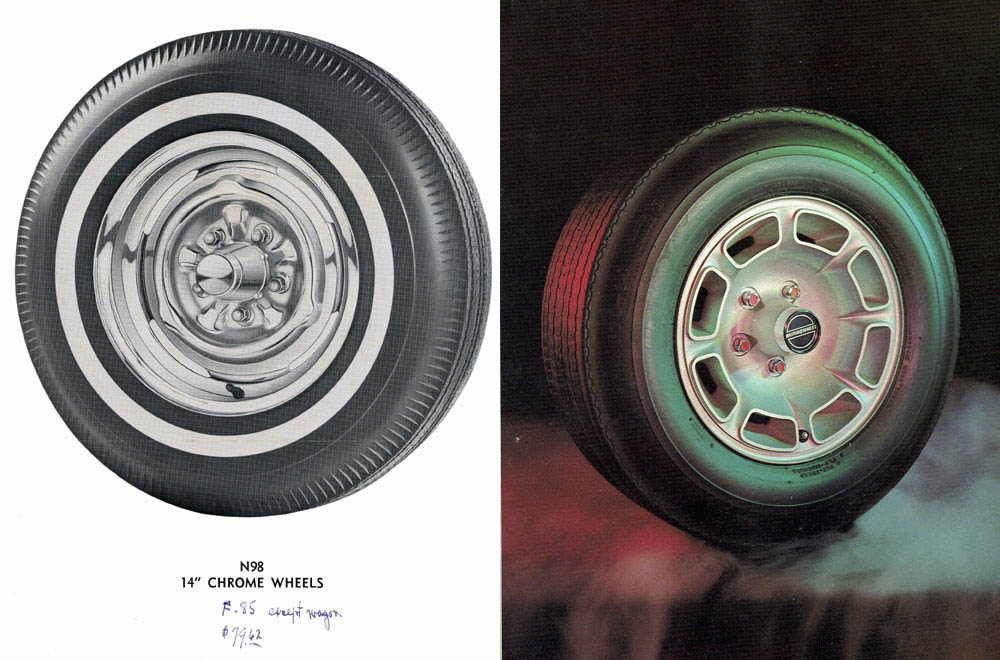
The first set of performance mag wheels for the F85 line (most often appearing on the 4-4-2) appeared mid-year 1965 (above, left). They were a full chrome design that disappeared for 1966. In 1971, the redesigned Delta 88 series could be ordered with the Super Stock IV wheel, which was the same polycast design as the Motor Wheel Exiter (above, right). This was available through ’72.
For 1966, the F85 wheel was replaced by the Magnum 500-like Super Stock wheels, later known as Super Stock I (below, top). It was available through 1972.
In 1968, the signature, argent gray Custom Sport wheels (below, bottom) were introduced (later known as Super Stock II), and in ’71 Oldsmobile introduced the Super Stock III, which was the SSII painted in the lower body color of the respective vehicle. These Super Stock wheels continued into the 1980s.
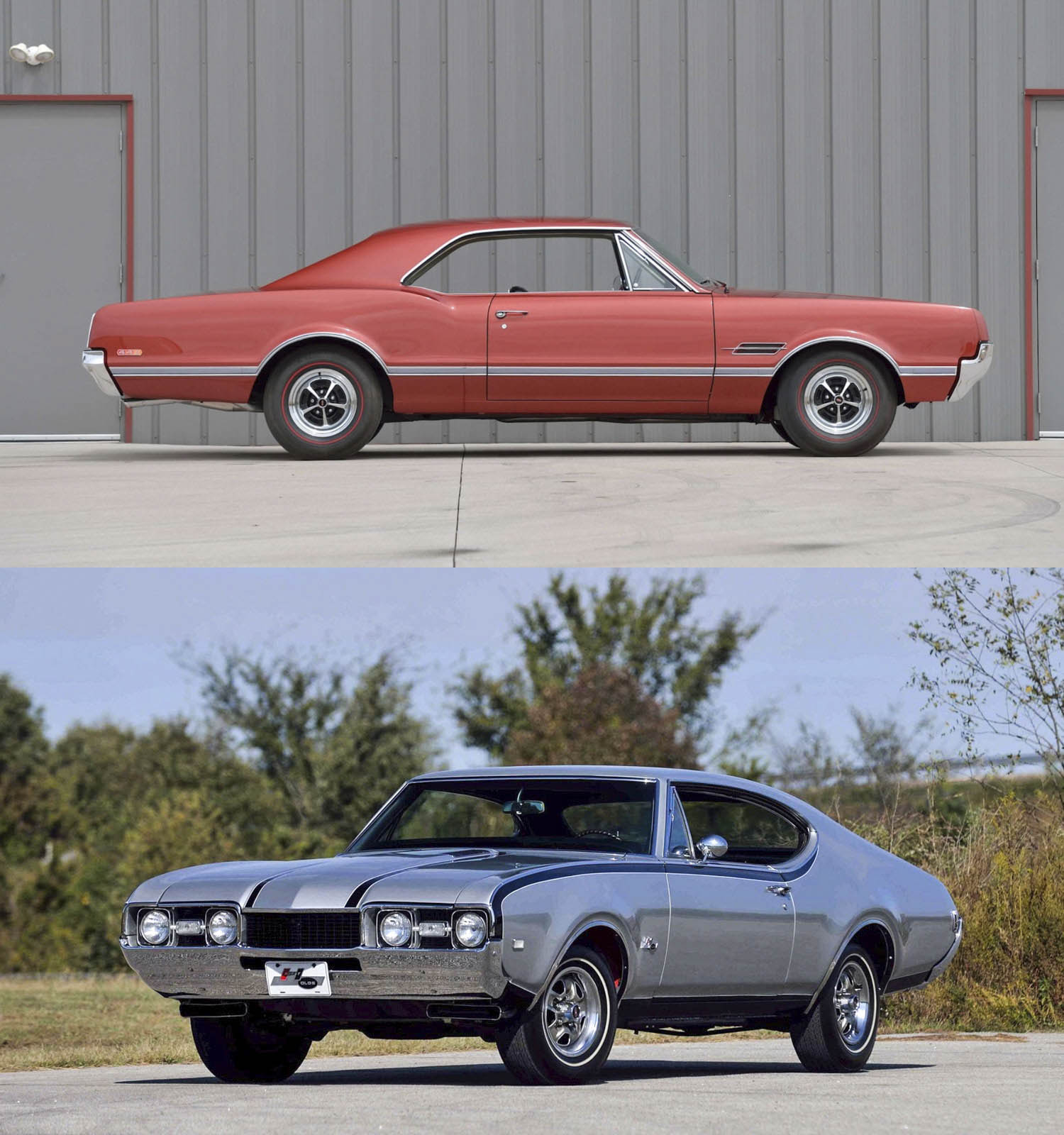
Pontiac
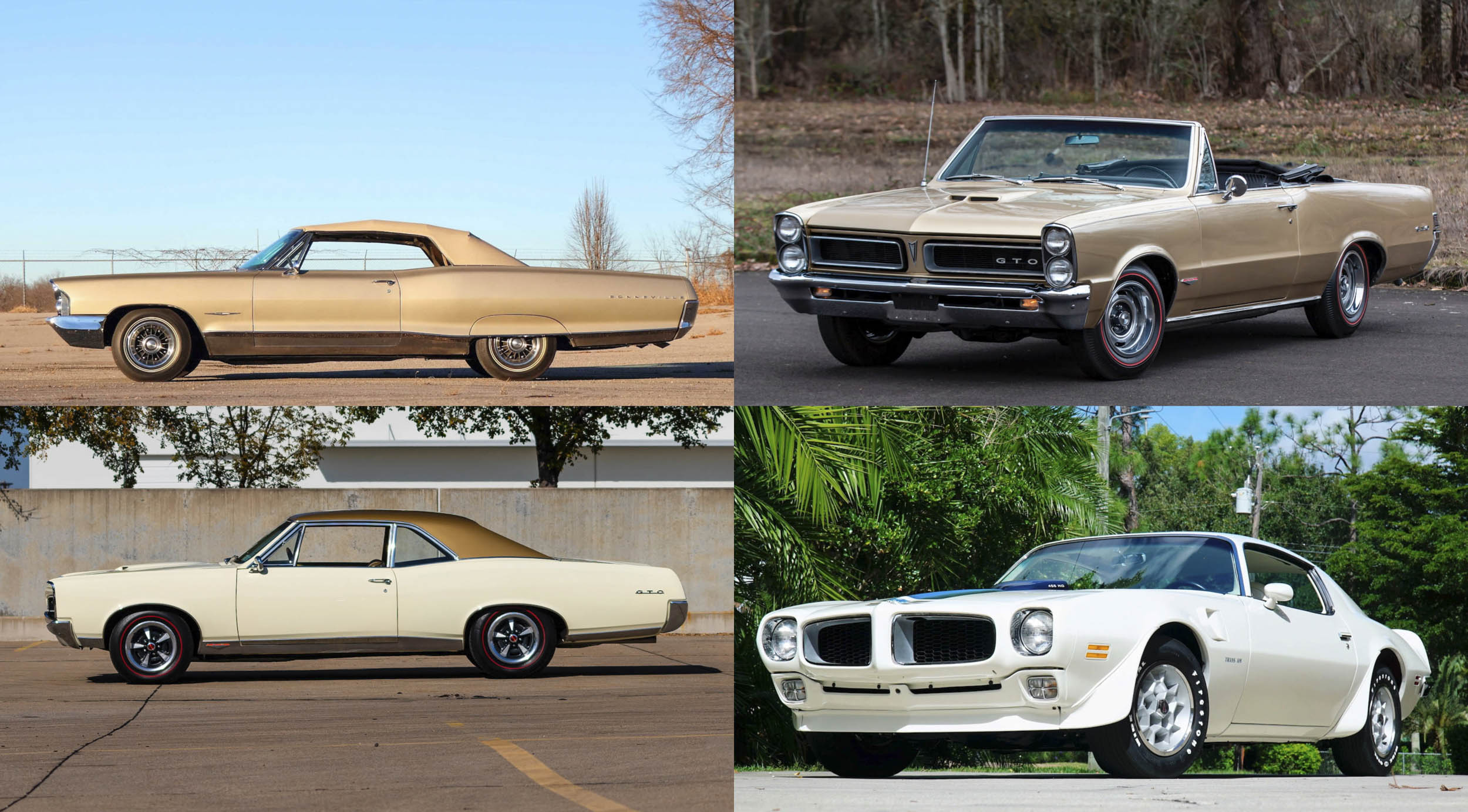
The Wide Track Division was a progenitor of factory mag wheels starting in 1960 with the aluminum 8-lug wheel (top left). They were only available on big Pontiacs through 1968, although they almost were introduced for the smaller GTO in 1966.
In 1965, Pontiac introduced the slotted Rally I wheel for the GTO and other mid-size models (top right). They became available for the all-new Firebird in 1967 but disappeared from both lines after 1968.
Starting in 1967, the five-spoke Rally II wheel (bottom left) became available for Pontiacs of all sizes. It was produced well into the 1980s.
Then, at the twilight of the muscle car era, the polycast Honeycomb wheel (bottom right) became available for the Firebird, Grand Prix, and mid-size Pontiacs. It was available from 1971–76. For 1977, the cast aluminum “Snowflake” wheel took its place for the Firebird and LeMans.
Shelby

The first GT350 in 1965 came with steel wheels standard, but a Cragar aluminum mag (top left) is what one usually sees them with. For 1966, a painted Magnum 500 was standard, with chrome Magnums or aluminum 10-spoke mags optional (top right). The latter was available through 1968. In 1967, Kelsey-Hayes five-spoke “Magstar” wheels (bottom left) became a one-year option. Five-spoke mags (bottom right) were the only wheel choice for 1969–70 Shelbys.
Studebaker

Studebaker was facing the fight of its life when Pontiac changed the performance-car rules with the GTO. The company was trying to marketing itself as a performance brand, but the supercharged Jet-Thrust engines were discontinued in December 1963. One of the nice performance items in Studebaker’s roster was Halibrand wheels, which were true magnesium pieces that were available for dealer installation for mid-year 1963 through ’64, according to Studebaker expert Bob Palma.
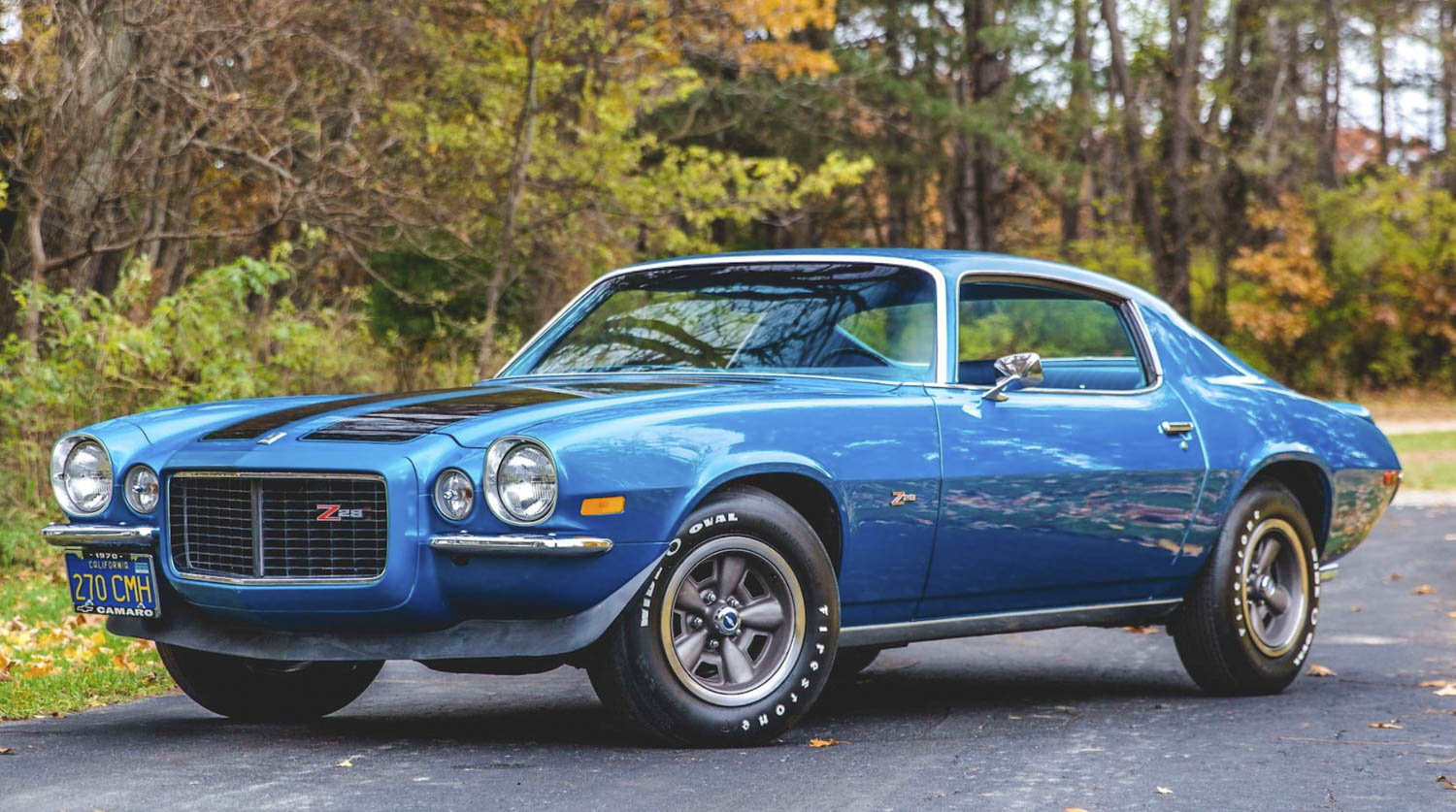










https://www.youtube.com/watch?v=pe-tc5s2538&pp=ygUUd2VhcG9uIHdoZWVsczogYSBuZXc%3D
You might be interested in the wheel we have just developed. Looking for a Company to purchase the business, but our Colt 45 18″ 2-piece forged aluminum alloy wheel has quality control standards to put the industry to shame. We have a low cost one piece on the drawing boards, 27 other designs, and 2 US patents also included in the sale. If you have any suggestions on who we should approach, we would be greatfull.